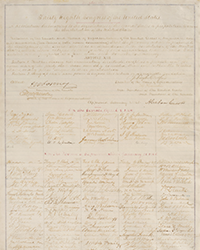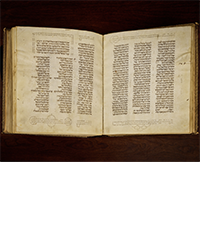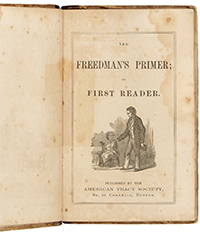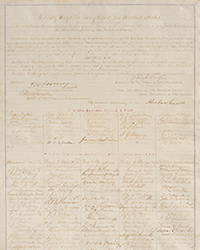Asher Rare Books and the Antiquariaat Forum have released a catalogue of Middle & South America. The material ranges from the 16th through the 20th century, but it is mostly quite old, dating to Spanish colonial times or the era of revolution, almost two centuries ago. It is interesting to see such a collection from a Dutch bookseller. While the Dutch were the greatest of travelers in the 16th and 17th century and a great colonial power, their influence in this part of the world was limited. They had extensive holdings in the East Indies, and of course, New York and other areas along the eastern seaboard of today's U.S.A. were Dutch. In South and Central America, Dutch control was limited to Suriname and Guyana. Nevertheless, the Dutch were always interested in reading about far away lands, and many of the books offered in this catalogue originated in other countries, the different languages attesting to this variety. Here are some of these books.
We start with a somewhat mysterious figure who nonetheless proved to be a very popular writer around the turn of the 18th century. Alexandre Exquemelin was sold into indentured servitude as a youth, subject to an unkind master. Fortunately, he was bought out by a more generous master, a barber-surgeon who taught Exquemelin his trade (today we would not want our barber to also be our surgeon, but this was another time). However, he was still broke and adventurous when his term expired, so Alexandre Exquemelin signed on with Henry Morgan and his pirates. For five years, he was one of the real Pirates of the Caribbean. After that, Exquemelin decided to return to the more respectable trade he learned, along with being an author. He wrote his book about pirates in America, which appeared in many languages in the late 17th and early 18th century. It was first published in Dutch, Exquemelin having settled in the Netherlands. Item 18 is a second (expanded) Dutch edition of Historie der boecaniers, of vrybuyters van America, published in 1700. Exquemelin's account has to be taken with a grain of salt, as he changed it to suit the audience of whichever language in which a particular edition was published. Nonetheless, this is probably the best look available at the life of a pirate in the late 17th century. What finally happened to Exquemelin is unknown. He served as a surgeon during the French raid on Cartagena, back in the West Indies, in 1697, about two decades after his pirate days. After that, he declined a request to further revise his book, saying he planned to go to America, and from there disappeared from history. Item 18. Priced at €6,950 (euros, or roughly $8,921 in U.S. currency).
Most of these books cover the Spanish colonial era and independence later on, but this one goes back even further: Recuerdos de la Monarquía Peruana o bosquejo de la historia de los incas (memories of the Peruvian monarchy or sketch of the history of the Incas). It was the work of Justo Sahuaraura, published in Paris in 1850. Sahuaraura was a Peruvian, born around 1775, who joined the priesthood. He supported the revolutionary cause during the period after 1810, imprisoned for his efforts awhile. Sahuaraura traced his ancestry back to the Inca leaders who ruled the land before the arrival of the Spanish. This book is a testament to those earlier leaders, dating back as far as the twelfth century and as late as the last Inca resister, Tupac Amaro. It contains 16 portraits and descriptions of these ancient Inca leaders. Sahuaraura believed the pre-Spanish society was just and well run, a society the descendants of the Incas could rebuild now that they were free again. Item 43. €5,500 (US $7,060).
Here is man who thought the Spanish war with the Indians, at least in Mexico, was justifiable. Some men came to the New World to conquer and exploit the land and its natives; others came to convert those people. Jean Foucher (or Juan Focher) was a French Franciscan who came for the latter purpose, which explains his willingness to justify the war. The cause of converting the Indians was sufficiently noble to justify warring against them. Focher came to Mexico around 1540 and stayed until his death in 1572. His most notable work was a guide for missionaries in converting the Indians to Christianity, the Chichimec Indians in particular. These tribes from central and northern Mexico had been particularly resistant to Spanish rule, hence Focher's willingness to justify the war to subdue them. This book contains instructions on converting the natives and conducting various ceremonies, along with his justification of the Chichimec war. Focher's guide was corrected by Diego Valades and published under the title Itinerarium Catholicum proficiscentium, ad infidels convertendos in 1574, shortly after Focher's death. Item 19. €35,000 (US $44,925).









